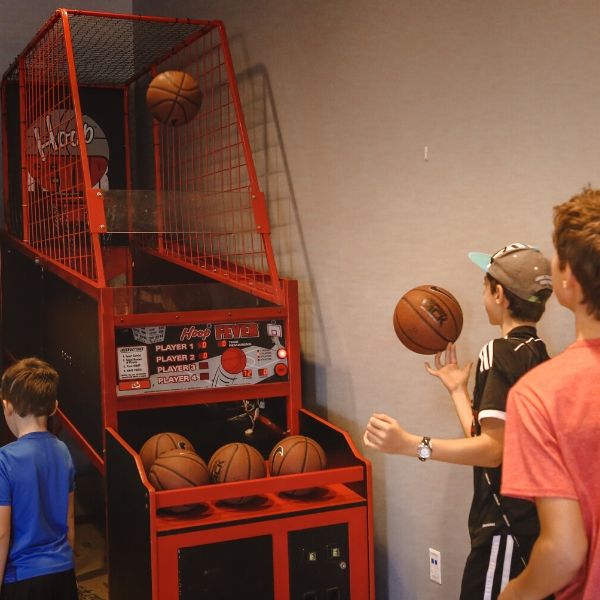Arcade basketball, with its enticing allure of flashing lights and the sound of swishing nets, is not just a game of chance. Behind the high-flying dunks and precision shots lies the intriguing world of physics. Understanding the science behind the arcade basketball hoop can be the key to mastering the perfect shot and racking up those winning points.
The first principle of physics at play in arcade basketball is projectile motion. When you release the ball, it becomes a projectile subject to the laws of physics. The arc of your shot is crucial, as it determines the trajectory the ball will take. Finding the right balance between height and distance is essential for increasing the chances of a successful basket. To get more information about Connect 4 Hoops arcade basketball machine visit ArcadeMachines.com

Image Source: Google
The force applied to the ball and the speed of your flick are vital components of a successful arcade basketball shot. Applying too much force might result in overshooting the basket, while too little may fall short. Achieving the right balance requires an understanding of acceleration – the rate at which the ball’s speed changes. Mastering the perfect flick involves applying just enough force to ensure a smooth acceleration towards the hoop.
Adding a controlled backspin to the ball can significantly impact the outcome of your shot. Backspin stabilizes the ball in the air, making it more likely to find the center of the hoop. It also helps counteract any irregularities in the arcade basketball hoop, giving you greater control over your shot.
In the world of arcade basketball, physics is the silent player guiding every shot. Mastering the perfect shot involves understanding and applying principles like projectile motion, force, acceleration, and backspin.